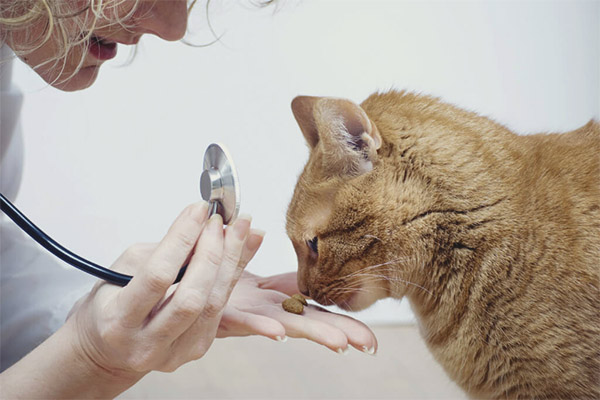The content of the article
Allergic reactions affect all mammals. The cat is no exception. Allergy develops on a rather complex mechanism. The pathogenesis of this condition is associated with various biosystems of the body. It is about immunity, resistance, reactivity. Simply put, without going into medical terminology, with this pathology there is an allergen, which, as something alien, is perceived by the body. In some cases, it becomes extremely dangerous, and the body tries to destroy it with all its might.
To neutralize a foreign agent is not as easy as it may seem at first glance. The body needs a lot of effort for this. In any case, this will be accompanied by certain losses in the form of tissue breakdown. Products formed in this case, in varying degrees, will poison the body.This causes the occurrence of certain symptoms in the form of shortness of breath, sneezing, other specific and nonspecific manifestations of an allergic reaction.
What is an allergen?
Anything can play this role. No one can affirmatively say that a particular substance has the properties of an allergen, but something will never cause allergies. For each animal, the allergen acts differently. One has an allergic reaction when it comes into contact with it, and the other cat is completely inert to this substance. All this is fully determined by what kind of reactivity (sensitivity) a particular cat has.
There is a certain classification of all allergens. It is based on one or another principle. First of all, distinguish:
- Antigen. Its action helps to stimulate the immune response.
- Hapten These substances are in no way associated with the immune system. As a result of action, antibodies are produced. They are represented by different classes of chemicals. Even a separate chemical element can play its role. This includes all that with which the cats are constantly in contact.Smoke from a cigarette, household chemicals, or, say, perfumery, can play the role of haptens.
- Allergens are classified according to another principle, in particular, by place of formation. In accordance with this, they can be divided into the following types:
- Exogenous allergen. It enters the body from the external environment. An example would be drugs, microbes, or something else. They enter the body in a variety of ways. Entry gates can be the digestive tract, skin, mucous membrane of the eyes, inhaled air.
- Endogenous allergen. Similar substances are formed in the body. This occurs as a result of complex biochemical transformations. The breakdown of tissues leads to the acquisition of allergenic properties.
Allergies in cats: species
The external manifestation of an allergic reaction is determined by the type of active allergen. The following types of allergic reactions are distinguished:
- Idiosyncrasy. This group can be attributed medicinal, food type of an allergic reaction. The reason may be dust, the effect of pollen.
- Infectious type of allergy.The reason for its occurrence is a different microflora.
- Allergy associated with the action of parasitic agents (fleas, ticks, worms).
- Allergic reaction that develops as a result of chemical factors.
Allergic manifestations may occur with a single exposure to the allergen on the body (primary allergy). However, the allergen can enter the body many times, as a result of which sensitization of the body can develop, in which there is an accumulation in the body of negative influences. The accumulation proceeds as long as a certain boundary established by the organism is not exceeded. By the way, its size is different for different cats. When the critical level is reached, the receipt of the smallest dose of the allergen is sufficient for the mechanism of an allergic reaction to start in full.
Flea allergy
This type of cat is most common. The cause is various ectoparasites, including fleas, ticks, lice. Even one bite is enough for an intolerable itch. The skin becomes red, there may even be bleeding sores.
Feeding Allergies
In frequency, this view is in second place. A characteristic feature is that this type of allergy may not manifest itself immediately. External signs will appear only after the allergen has accumulated in sufficient quantities. Therefore, the diagnosis of this type is associated with certain difficulties. At the time the allergen accumulates in the blood, there are no external clinical manifestations. Lack of response when feeding with any product does not guarantee that it will appear later.
Pronounced allergic properties are found in animal and plant proteins. It can be pork, beef, fish, milk, other products. In short, any product that is used for the production of dry fodder can act as an allergen. It should be borne in mind that the reaction does not necessarily manifest in all animals, without exception. It can only be seen in a receptive group.
Atopic dermatitis
Absolutely any substance can act as an allergen. It is not even worth listing, since the list will be very long. Clinical manifestations are dryness and itching of the skin. Remission is replaced by aggravation.Redness and swelling may occur with the formation of weeping ulcers. As a result of scratching, microflora can join the wound surface. The difficulty lies in the fact that this species is practically not amenable to therapy. Throughout life, only supportive treatment is given.
Clinical symptoms
Regardless of what type of allergy has developed, the external manifestations are of a similar nature:
- tissue hyperemia with the development of progressive edema;
- body temperature rises;
- skin becomes covered with a rash;
- the addition of dyspnea and even the occurrence of signs characteristic of bronchial asthma;
- the cat begins to sneeze intensely;
- sometimes a vomiting reflex becomes pronounced.
Clinical manifestations may occur immediately after the action of the allergen or appear over time. From the beginning of the contact to the pronounced clinical manifestations can take quite a long time.
Establishing diagnosis
Make it very difficult. If people are staging various allergy tests, they do not do this for animals.Of course, there are sets of certain allergens, but their number is very limited. The exception method is mainly used. If food allergies are suspected, the cat is put on a special diet. Its duration can be up to three months. The composition of such diets include products that have not been used in the cat's diet before. Upon termination resorted to provocative feeding. If the symptoms return, this will confirm the diagnosis.
Treatment
First of all, exclude from the diet that product, which causes the development of an allergic reaction. If there are already pronounced clinical symptoms, carry out the appointment of antihistamines. You should not experiment. They can be prescribed only by a veterinarian. Carry out the formulation of cleaning droppers. But without the correct feeding therapeutic effect is impossible to achieve. You must try to make the right diet. The task is not easy, but quite doable. In feeding spend using hypoallergenic feed. There is no absolute guarantee, but you can try.It is better if a specialist will be involved in the preparation of the diet.
If we are talking about atopic dermatitis, then it requires long-term treatment. Sometimes it is carried out throughout life. It is necessary to exclude an allergen. Antihistamines are given by mouth. At the same time carry out local treatment with ointments.
If as a result of scratching an infection has joined, a course of antibiotics may be prescribed.
To reduce itching, you can use special shampoos for washing the animal. The detergent should not contain flavors or other unnecessary ingredients, which may also be allergens. For the extermination of fleas used insecticidal drugs approved for use in animals. De-worming should be carried out regularly, as helminths can also cause the onset and development of allergic reactions.
Prevention
In preventing the occurrence and development of allergies in cats, a large role is given to preventive measures:
- Regular wet cleaning of the premises with careful removal of dust.
- Houseplants, including flowers, must be placed as high as possible in order to restrict access to them by the cat.
- Cleaning supplies should be stored in such a place so that it is not accessible to the cat.
- It is very important to approach the preparation of the diet of the animal. In the diet it is necessary to use only high-quality feed.
- Systematic examination of the hair and ears of an animal for the presence of ticks, fleas.
In conclusion, it must be said that allergy to cat food is a rather serious pathology that is not as easy to cope as we would like. If it originated in an animal, do not self-medicate. You must show the cat to the vet. Only a qualified specialist will be able to prescribe the correct adequate treatment.
Video: food allergies in cats and dogs











To send